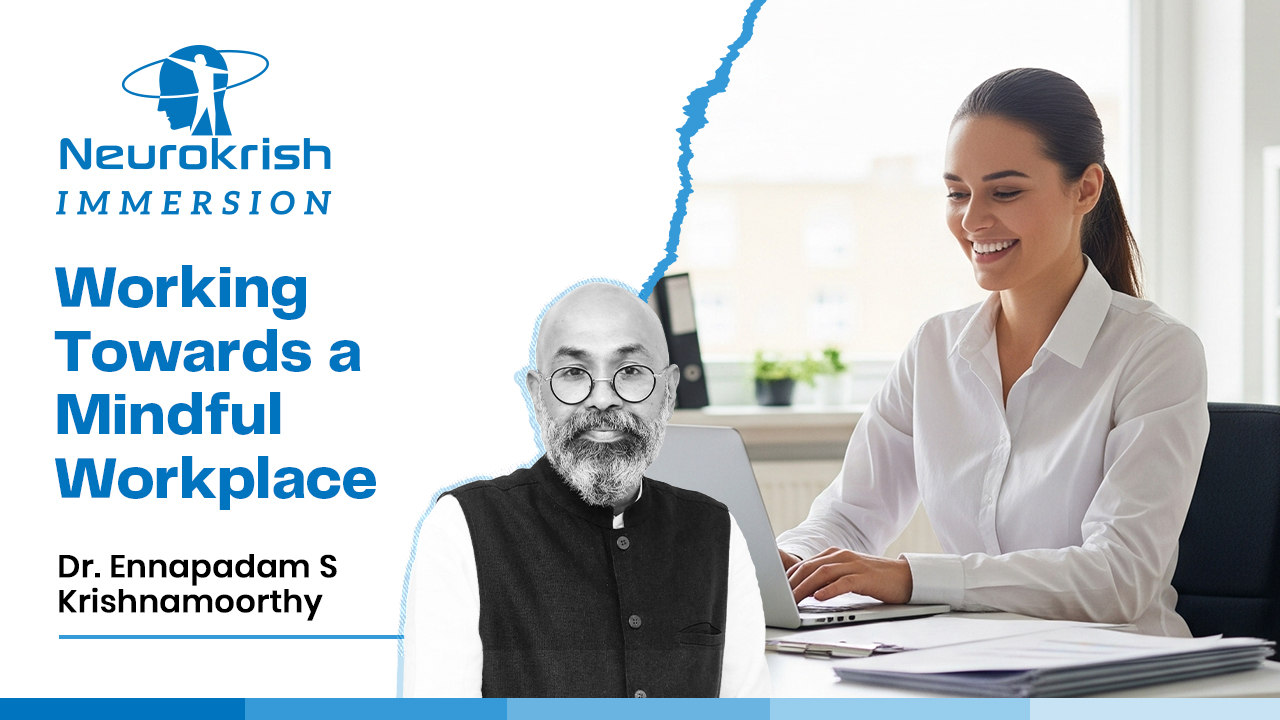By Dr. Ennapadam S. Krishnamoorthy
Modern workplaces are increasingly defined by stress. Employers relentlessly chase productivity. Employees, on the other hand, pursue balance. The fine line we must walk lies somewhere between employer empathy and employee resilience.
Yet, challenges abound on both sides. Employers are not always empathetic. Employees, sadly, are not always resilient enough to withstand the demands placed on them. The tragic story of a young employee at EY, who allegedly succumbed to the pressures of an excessive workload, brought this issue into the public eye. For many young professionals transitioning from academia to the corporate world, balancing personal needs with workplace expectations is fraught with difficulty.
At the heart of this lies one thing: stress.
What Is Stress, Really?
Stress is the yawning gap between expectation and reality, what we demand of our workplaces, and what they actually offer; what workplaces expect of us, and what we can realistically provide.
It manifests in diverse ways: sleepless nights, anxiety at work, physical ailments, and an overwhelming sense of being stretched too thin.
Stress is both psychological and physical. It begins with tension, worry, and irritability, but can spiral into increased heart rate, muscle tension, digestive disturbances, and fatigue. While short bursts of stress are a normal physiological response, preparing us for action, sharpening our focus, even fueling creativity, chronic stress corrodes both mental and physical health.
Your Brain on Stress
Consider this: you are on a hike, and suddenly, your eyes fall on a snake. Instantly, your brain begins a rapid sequence of events.
- The thalamus processes the sensory input.
- The visual cortex recognizes the snake.
- The amygdala, the emotion center, triggers your survival instincts.
You then react with one of three responses: fight, flight, or freeze. This autonomic nervous system arousal, pounding heart, trembling limbs, sweating, is essential for survival.
But when this state persists without pause, it leads to hypertension, diabetes, obesity, irritable bowels, and other chronic illnesses. Stress, therefore, is not just in the mind. It is a whole-body experience.
Learned Helplessness and Locus of Control
Psychologists have long studied how control, or the lack of it, shapes stress. The concept of learned helplessness emerged from experiments where mice subjected to unpredictable shocks eventually displayed symptoms akin to human depression.
In modern times, many corporate employees, tethered to global time zones and relentless deadlines, find themselves in a similar state: powerless over schedules, work demands, or even rest.
Closely linked is the locus of control:
- Those with an internal locus believe they can shape outcomes and are more resilient.
- Those with an external locus feel dictated by circumstances and are more vulnerable to stress.
The young EY employee tragically exemplified the latter, no control over workload, no control over timelines, leading to a dangerous spiral of helplessness.
Playing to Our Strengths
Not all stress comes from overload. Sometimes, it arises from misfit roles. Psychologist Howard Gardner’s theory of multiple intelligences reminds us that intelligence is not one-dimensional. Some excel at logical reasoning, others at music, spatial awareness, interpersonal skills, or naturalistic thinking.
Employers must recognize and place people in roles that allow them to play to their strengths. Every individual is intelligent in unique ways. The real question is not whether we are smart, but how we are smart.
Self-Actualization and the Workplace
Maslow’s hierarchy of needs remains as relevant as ever:
- Physiological needs – food, sleep, shelter.
- Safety needs – job security, health, property.
- Love and belonging – connection, empathy, community.
- Esteem – respect, recognition, freedom.
Self-actualization – realizing one’s full potential.
Employers and workplaces play a role at every level, from ensuring safety and security to creating environments where employees feel respected, valued, and ultimately fulfilled.
Managing Stress: Two Pathways
When faced with stress, there are only two real choices:
- Modify the situation.
Try to change the circumstances causing stress. For example, renegotiate timelines or workloads. - Modify expectations.
When situations cannot be changed, learn to adapt one’s expectations and responses.
Social support is equally critical. Families, friends, hobbies, pets, and workplace communities all provide buffers against stress. Workplaces, in particular, must consciously create opportunities for connection and support.
The Mental Health Imperative
Stress unchecked can tip into depression. Symptoms include persistent low mood, withdrawal, fatigue, loss of appetite, apathy, and even suicidal thoughts. Because mental health is an invisible disability, it often goes unrecognized until it is too late.
It is vital that colleagues and employers learn to spot these signs, engage in empathetic conversations, and encourage professional support when needed. Sometimes, a simple coffee and a conversation can make all the difference.
Towards a Balanced Future
So, is stress necessary? In moderation, yes, it drives ambition and growth. But left unchecked, it corrodes wellbeing.
The balance we must strive for is between ambition and equanimity. Workplaces must respect the rhythms of human life, while employees must cultivate coping strategies, internal control, and support systems.
Here are five steps I often recommend:
- Recognize the genesis of your stress.
- Develop coping strategies.
- Modify situations or expectations.
- Reclaim your internal locus of control.
- Nurture your support systems.
A Closing Thought
An old Hindu proverb says: “In illness, the physician is a father; in convalescence, a friend; and when health is restored, a guardian.”
As a physician, I believe the best role we can play is that of an inspirer of hope.
Hope that workplaces can be mindful.
Hope that employers can be empathetic.
Hope that employees can be resilient.
Let us all work towards a stress-free, mindful existence, and, by extension, mindful workplaces.
Share this post
